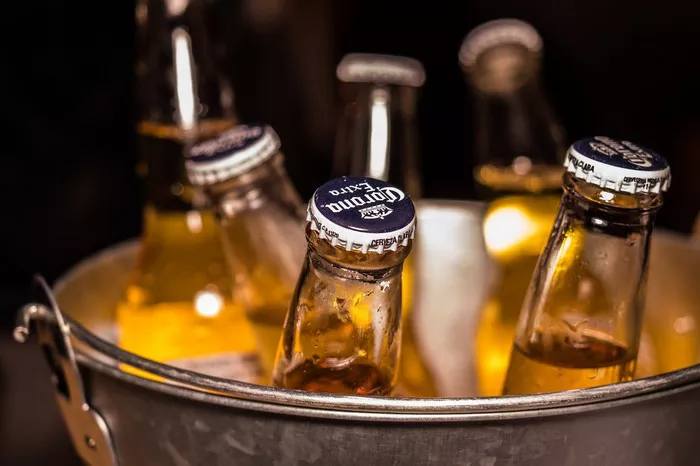Ginger beer is a delightful and refreshing beverage known for its spicy kick and effervescence. Crafting homemade ginger beer can be an enjoyable and rewarding experience. However, it can be disappointing when the expected fizziness is missing from the final product. Understanding the reasons behind a lack of carbonation in homemade ginger beer is crucial to troubleshooting and achieving that desired effervescence.
The Fermentation Process and Carbonation
Understanding the fermentation process is fundamental to comprehending why ginger beer might lack fizziness. Fermentation, primarily driven by yeast, is essential in creating carbonation in ginger beer. Yeast consumes sugars present in the liquid and produces carbon dioxide as a byproduct. This carbon dioxide dissolves in the liquid, creating the characteristic bubbles and fizziness.
Insufficient Fermentation Time
One common reason for flat ginger beer is insufficient fermentation time. If your ginger beer lacks fizziness, it might not have undergone fermentation for an adequate duration. Fermentation time varies depending on factors like ambient temperature and the specific yeast strain used. Extending the fermentation period might help encourage more carbonation in your ginger beer.
Temperature Control and Its Impact
Temperature plays a pivotal role in the fermentation process. Yeast activity is greatly affected by temperature fluctuations. If the fermentation environment is too cold, yeast activity slows down, hindering carbonation. Conversely, if it’s too warm, yeast might become too active too quickly, potentially leading to premature carbonation and an inadequate fizziness in the end product.
Yeast Viability and Quality
Yeast health and quality significantly influence the carbonation of ginger beer. Using expired or low-quality yeast can impede fermentation, resulting in reduced carbonation. It’s essential to ensure the yeast used is viable and fresh to facilitate the production of carbon dioxide during fermentation.
Inadequate Sugar Content
The amount of sugar present in the ginger beer mixture is critical for fermentation and carbonation. Insufficient sugar content can hinder yeast activity, leading to a lack of fizziness. Adjusting the sugar content in your ginger beer recipe might be necessary to achieve the desired level of carbonation.
Improper Sealing and Fermentation Vessels
Airtight sealing of fermentation vessels is crucial for trapping the carbon dioxide produced during fermentation, allowing it to dissolve in the liquid and create fizziness. Inadequate sealing or using improper fermentation vessels that don’t retain gas can result in a loss of carbonation.
pH Levels and Acidity
The pH levels and acidity of the ginger beer mixture can impact fermentation and carbonation. Yeast thrives in a moderately acidic environment. If the pH levels are too high or too low, it might hinder yeast activity, affecting the production of carbon dioxide and resulting in a lack of fizziness in the final product.
Incomplete Straining or Filtering
Residual solids or ginger particles left in the ginger beer might interfere with carbonation. Insufficient straining or filtering of the mixture before bottling can lead to trapped solids, inhibiting the release of carbon dioxide and resulting in a flat ginger beer.
Overexposure to Oxygen
Exposure to oxygen during the fermentation and bottling process can negatively impact carbonation. Oxygen can inhibit yeast activity and cause the loss of carbon dioxide, leading to reduced fizziness. Ensuring minimal exposure to oxygen during the entire brewing and bottling process is essential for retaining carbonation.
Carbonation Techniques and Troubleshooting
If your ginger beer lacks fizziness even after considering these factors, there are some additional techniques to troubleshoot and improve carbonation:
Secondary Fermentation: Consider a secondary fermentation stage by adding a small amount of sugar to the bottled ginger beer to encourage further carbonation.
Agitation: Gently swirling or agitating the bottles periodically during fermentation can help distribute the yeast and sugar more evenly, potentially aiding in carbonation.
Extended Fermentation Period: Allow the ginger beer to ferment for a longer duration to provide more time for carbonation to develop.
Natural Carbonation Aids: Explore natural carbonation aids such as raisins, which can introduce additional yeast into the mixture and enhance carbonation.
Conclusion
Achieving the desired fizziness in homemade ginger beer requires careful attention to various factors throughout the fermentation process. Understanding the role of fermentation time, temperature, yeast quality, sugar content, sealing, pH levels, filtering, oxygen exposure, and employing effective carbonation techniques are crucial in troubleshooting and improving carbonation. By addressing these aspects, enthusiasts can enhance their ginger beer brewing experience and enjoy a fizzy, delightful beverage.


